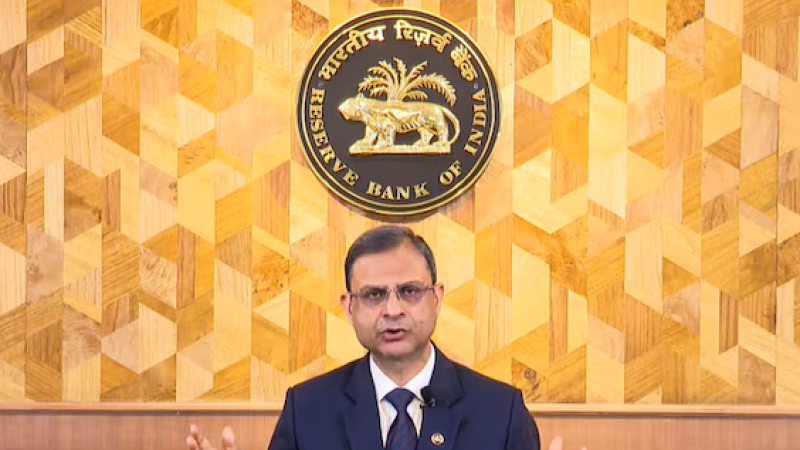The Reserve Bank of India’s Monetary Policy Committee (MPC) has announced a 50 basis points (bps) reduction in the repo rate to 5.5%, shifting the monetary policy stance from accommodative to neutral, while also slashing the Cash Reserve Ratio (CRR) by 100 bps. The move, aimed at supporting economic growth amid easing inflation, has been widely welcomed by industry leaders across sectors, particularly in real estate and financial services.
Kaustubh Gupta, Co-Head Fixed Income, Aditya Birla Sun Life AMC Ltd, With the RBI’s jumbo 50-bps repo rate cut and 100-bps CRR cut, policy easing has been front loaded. We view the policy as growth supportive and stimulative along with an indication of a clear resolve by policy makers to push for growth in an uncertain global environment. The governor also said that while growth is decent, aspirational growth in the 7-8% range.
Nand Gopal Anand, Partner, JSA Advocates & Solicitors, "By sharply reducing the Repo Rate and easing CRR norms, the RBI has taken a bold step to stimulate consumer demand and enhance liquidity in the banking system. With more funds at their disposal, banks are now better equipped to meet rising credit demand, which is likely to result in a surge in Indian rupee loan transactions. These measures are expected to play a pivotal role in reviving the economic momentum, especially after last year’s inflation-driven slowdown."
Financial Markets Reaction
Parijat Agrawal, Head of Fixed Income, Union Asset Management Co. Pvt. Ltd.
“The MPC’s forward-looking decision surprised the markets. A 50 bps repo rate cut and 100 bps CRR reduction, along with a stance change, indicate confidence in economic stability. Lower inflation projections support the move. However, further cuts are unlikely soon and will depend on data.”
Hemant Jain, President, PHDCCI
“We highly appreciate the RBI's stance of reducing the repo rate by 100 bps cumulatively from February to June 2025. With inflation expected at 3.7% and GDP growth projected at 6.5% for FY26, this policy will boost growth while ensuring price stability. The move strengthens India’s macroeconomic fundamentals despite global uncertainties.”
Real Estate Sector Reactions
Manju Yagnik, Vice Chairperson, Nahar Group & Senior VP, NAREDCO Maharashtra
“The 50 bps repo rate cut is a timely intervention that will lower home loan interest rates below 7.75%, improving affordability, especially for first-time buyers. It will boost mid-income and premium housing, ease liquidity for developers, and spur the broader real estate value chain.”
Dharmendra Raichura, VP & Head of Finance, Ashar Group
“This positive move makes homeownership more accessible. Improved buyer sentiment will encourage developers to launch new projects, supporting a vibrant and confident market.”
Sunny Bijlani, Joint MD, Supreme Universal
“With borrowing costs set to decline, EMIs become more affordable. This is a critical relief for aspiring premium homebuyers and will encourage developers to offer high-quality, timely-delivered projects with lifestyle-oriented features.”
Anshul Jain, CEO – India, SEA & APAC Tenant Representation, Cushman & Wakefield
“A well-calibrated and timely cut, the 50 bps reduction will enhance affordability, especially in mid-segment housing. It strengthens India's position as a stable investment destination, improving the viability of capital-intensive projects like Data Centers and Global Capability Centers.”
Shekhar G Patel, President, CREDAI
“This third consecutive cut reflects the RBI’s shift to growth-oriented policy amid low CPI inflation of 3.2%. It enhances affordability in affordable and mid-income housing, boosts buyer sentiment, and drives demand across consumption-driven sectors. We are optimistic about reaching the $1 trillion real estate market size by 2030, contributing to India’s vision of an $8 trillion economy.”
Economic & Ratings Perspective
Sankar Chakraborti, MD & CEO, Acuité Ratings & Research
“With inflation easing to 3.2% and broad-based moderation across sectors, the RBI has a rare policy window to prioritize growth. However, external risks like global trade tensions and monsoon variability remain. We foresee another 25 bps cut to 5.25%, but policy space could be constrained if global headwinds worsen.”
Conclusion
The RBI’s bold and timely 50 bps rate cut, coupled with the neutral policy stance and improved inflation outlook, signals a renewed focus on growth amid global uncertainty. The real estate sector stands to benefit significantly, while broader macroeconomic sentiment is expected to strengthen further, positioning India as a resilient and investment-worthy economy.


.jpg)